Einleitung
Der Einbau einer zweiten Festplatte in den iMac hat viele Vorteile, wie z.B. eine höhere Geschwindigkeit, mehr Speicherplatz und weniger Aufregung beim Installieren von neuer Software. Diese Anleitung zeigt dir, wie du eine zweite Festplatte anstelle des optischen Laufwerks einbauen kannst.
Werkzeuge
Ersatzteile
-
-
Löse die einzelne Kreuzschlitzschraube in der Mitte der Zugangsklappe.
-
Entferne die Zugangsklappe von deinem iMac.
-
-
-
Entferne folgende zwölf Schrauben, welche die Frontblende am rückwärtigen Gehäuse befestigen:
-
Acht 13 mm T8 Torx Schrauben
-
Vier 25 mm T8 Torx Schrauben
-
-
-
Hebe die Frontblende vorsichtig an der Oberkante aus dem rückwärtigen Gehäuse. Es hilft, wenn du dabei ganz sanft mit den Daumen auf die Ecken des Displays drückst.
-
Wenn die Oberkante der Frontblende weg vom rückwärtigen Gehäuse ist, dann drehe die Frontblende in Richtung des Standfußes und entferne sie aus dem rückwärtigen Gehäuse.
-
-
-
Trennt den Temperatursensor des LCD ab, indem du seinen Stecker gerade aus seinem Anschluss auf dem Logic Board ziehst.
-
-
-
Entferne die beiden 5,3 mm Torx T6 Schrauben, welche das Displaydatenkabel am Logic Board befestigen.
-
-
-
Löse den Stecker am Displaydatenkabel aus seinem Anschluss auf dem Logic Board, indem du seine Plastiklasche zu dir, weg vom iMac ziehst.
-
-
-
Entferne die acht 12 mm Torx T8 Schrauben, welche das Display am rückwärtigen Gehäuse befestigen.
-
Hebe die rechte Seite des Displays ein paar Zentimeter aus dem iMac heraus.
-
-
-
Während das LCD angehoben ist, kannst du das LCD Kabel nach unten abziehen.
-
Eine andere Möglichkeit ist, das LCD Versorgungskabel am LCD abzulösen und nicht am Netzteil.
-
-
-
Entferne, wenn nötig, die Stücke von Klebeband, welche die Kabel der Thermosensoren an der Festplatte/ am optischen Laufwerk des iMac befestigen.
-
Löse den Stecker vom Thermosensor des optischen Laufwerks vom Logic Board ab, indem du ihn in Richtung Oberkante des iMac ziehst.
-
-
-
Entferne die beiden 7 mm Torx T10 Feingewindeschrauben, welche das optische Laufwerk am rückwärtigen Gehäuse befestigen.
-
-
-
Hebe das freie Ende des optischen Laufwerks ein wenig aus dem rückwärtigen Gehäuse heraus.
-
Entferne die beiden 3,5 mm Torx T6 Schrauben, welche den Stecker des optischen Laufwerks am optischen Laufwerk befestigen.
-
-
-
Setze das flache Ende des Spudgers zwischen den Stecker des optischen Laufwerks und dem optischen Laufwerk ein.
-
Verdrehe den Spudger, um den Stecker vom optischen Laufwerk abzulösen.
-
-
-
Hebe das optische Laufwerk aus dem rückwärtigen Gehäuse heraus und ziehe sie von der Seite des rückwärtigen Gehäuses weg, damit sich der Streifen von EMI Schutzband auf seiner Oberseite ablöst.
-
-
-
Entferne, falls nötig, das Stückchen Schaumstoff, welches den Thermosensor des optischen Laufwerks bedeckt.
-
Um den Thermosensor auszubauen, musst du die mittlere Haltenase der Thermosensorhalterung mit der Spudgerspitze anheben und gleichzeitig das Thermosensorkabel etwas anspannen.
-
-
-
Heble die Halterung des Thermosensorkabels des optischen Laufwerks mit dem flachen Ende des Spudgers aus der Klebeverbindung zum optischen Laufwerk.
-
-
-
Entferne die beiden 6,5 mm Torx T10 Schrauben auf jeder Seite des optischen Laufwerks. (also insgesamt vier)
-
-
-
Drehe die Halterung des optischen Laufwerks etwas vom optischen Laufwerk weg.
-
Ziehe die Halterung des optischen Laufwerks weg vom freien Ende des optischen Laufwerks, achte dabei darauf, dass sich keine der Laschen verfangen.
-
-
-
Entferne die drei 3,0 mm Kreuzschlitz #0 Schrauben aus dem Gehäuse des optischen Laufwerks.
-
-
-
Öffne das Gehäuse, indem du von der linken Kante ausgehend vorsichtig ziehst.
-
Ziehe weiter an den beiden Gehäusehälften, bis sie sich trennen.
-
-
-
Entferne die beiden 3,0 mm Kreuzschlitz #0 Schrauben, mit welchen die Frontblende am Gehäuse des optischen Laufwerks befestigt ist.
-
-
-
Hebe die schwarze Kunststoff-Frontplatte aus dem Gehäuse der Optical Bay.
-
Baue das Gehäuse des optischen Laufwerks ohne die Frontplatte unter Verwendung der drei originalen 3,0 mm Kreuzschlitz Schrauben wieder zusammen.
-
-
-
Entferne den Abstandshalter aus Kunststoff vom Gehäuse des optischen Laufwerks, indem du einen der Clips auf beiden Seiten eindrückst und ihn dann nach oben aus dem Gehäuse heraushebst.
-
-
-
Stelle sicher, dass die Anschlüsse nach unten zeigen, bevor die Festplatte in das Gehäuse eingesetzt wird.
-
Lege die Festplatte vorsichtig in das Gehäuse.
-
Während eine Hand das Gehäuse an Ort und Stelle hält, drücke mit der anderen Hand die Festplatte an die Anschlüsse im Gehäuse.
-
-
-
Sobald die Festplatte fest sitzt. kannst du den Abstandshalter aus Kunststoff wieder einsetzen. Drücke dabei die Festplatte gegen die Unterseite des Gehäuses.
-
Schließe alle Kabel, die du vom ursprünglichen Laufwerk entfernt hattest, am optischen Laufwerk an.
-
Um dein Gerät wieder zusammenzusetzen, folge den Schritten in umgekehrter Reihenfolge.
5 Kommentare
These iMacs use ATA DVD drives. Using the SATA drive enclosure linked above is guaranteed to fail. :-(
My EMC 2134 has a SATAII optical drive.
I apologize for the reply after over a year.
No iMac 24 "both 2007 and 2008 can accommodate a SATA Superdrive. This is certain.
It is clear that this installation is made to the adapter referred to as "Related Products": [verlinktes Produkt fehlt oder ist deaktiviert: IF107-079-1].
So any HDD or SSD you enter this run at high speed to 100 MB / sec of UltraATA100.
Henry -
Do I assume correctly that this iMac model doesn't have two SATA ports on the logic board, so a dual 2.5" SSD/HDD drive could be installed in the 3.5" bay with an adapter/bracket? This way one could save the optical drive... Anyone?
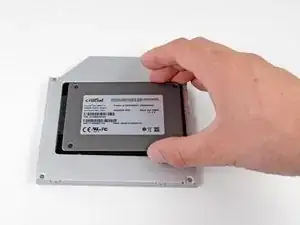
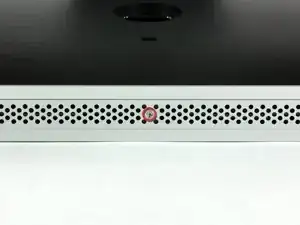
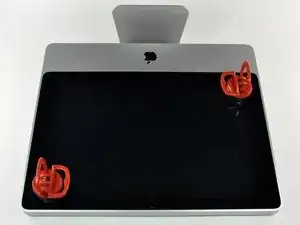
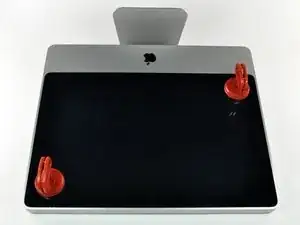
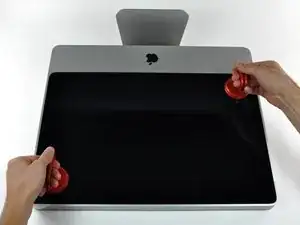
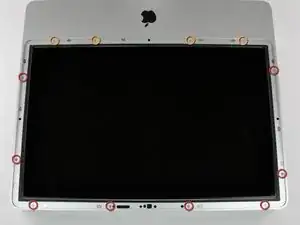
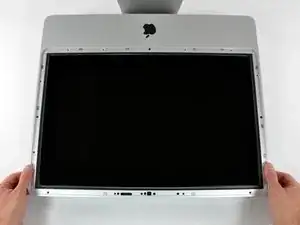
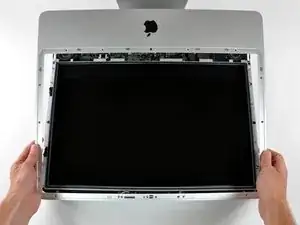

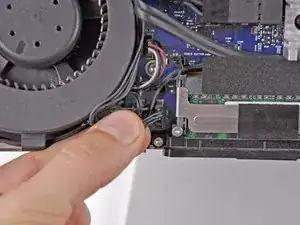
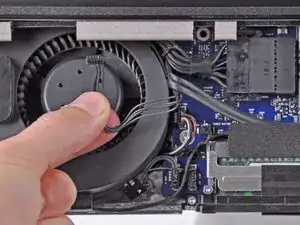
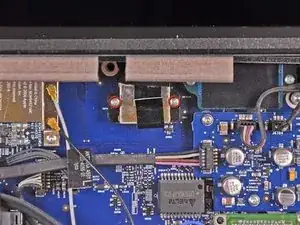
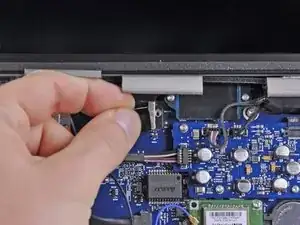
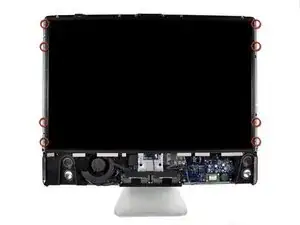
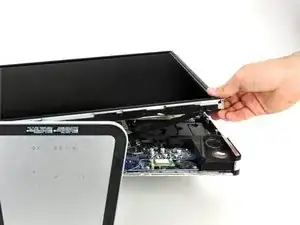
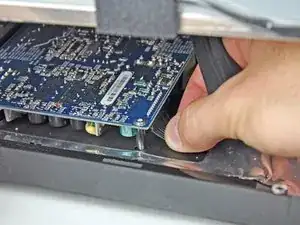
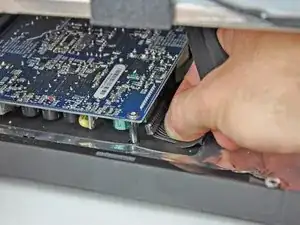
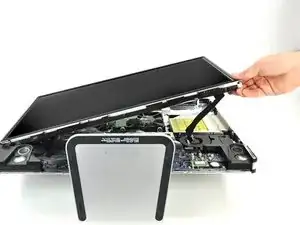
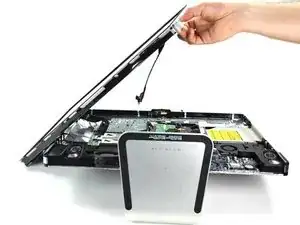
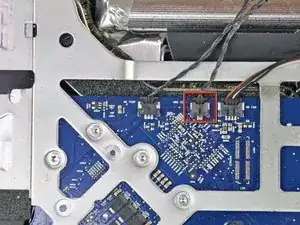
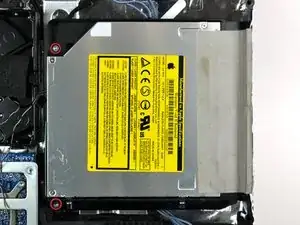
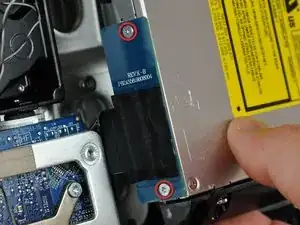
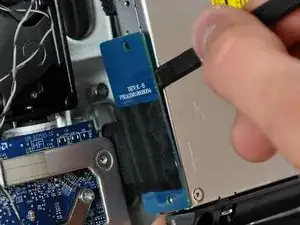
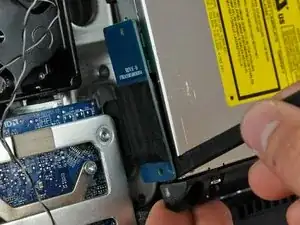

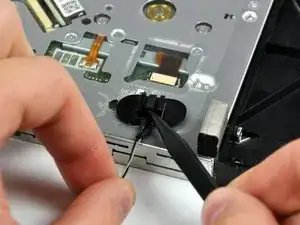
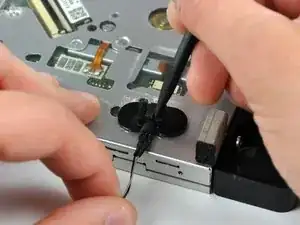
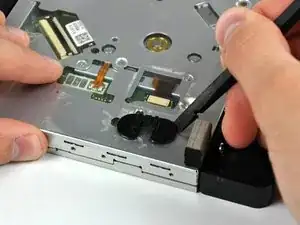
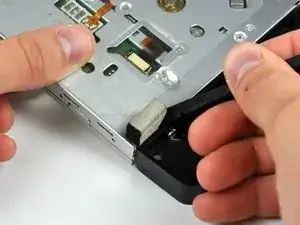
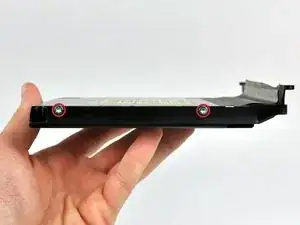
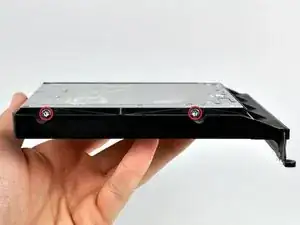
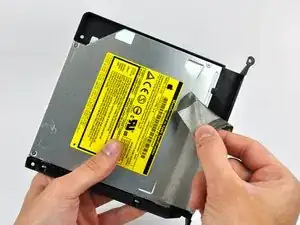
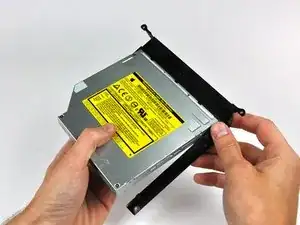
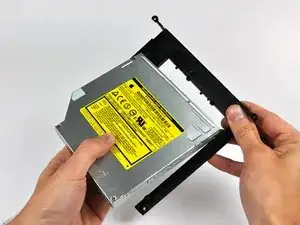
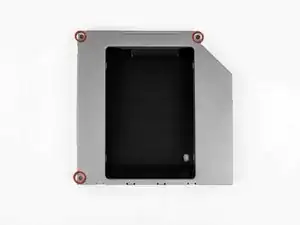
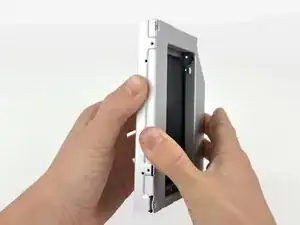
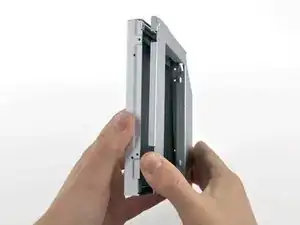
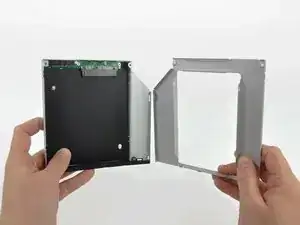
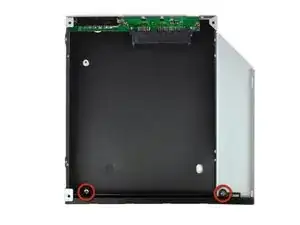
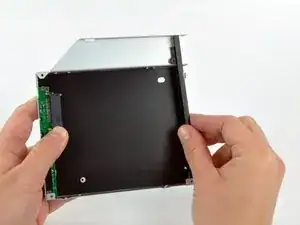
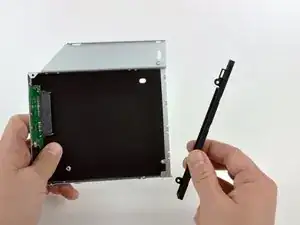
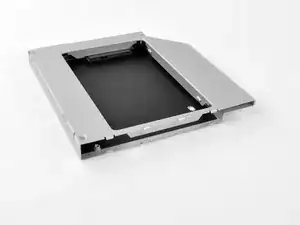
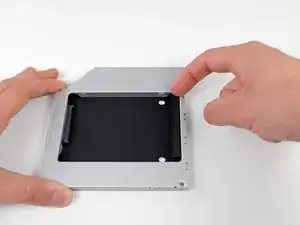
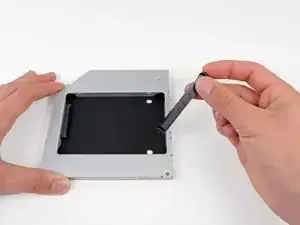
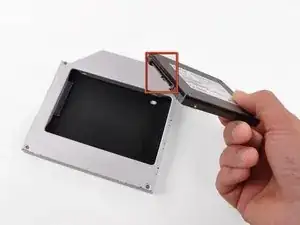
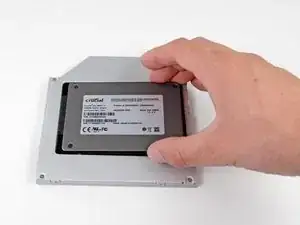
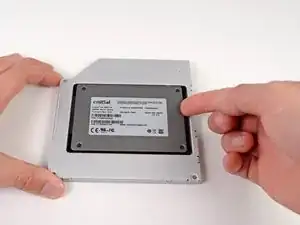
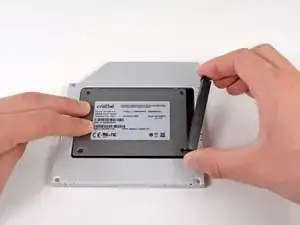
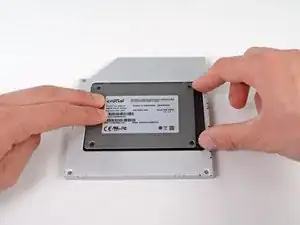

PH2 head necessary to remove screw.
airshack -